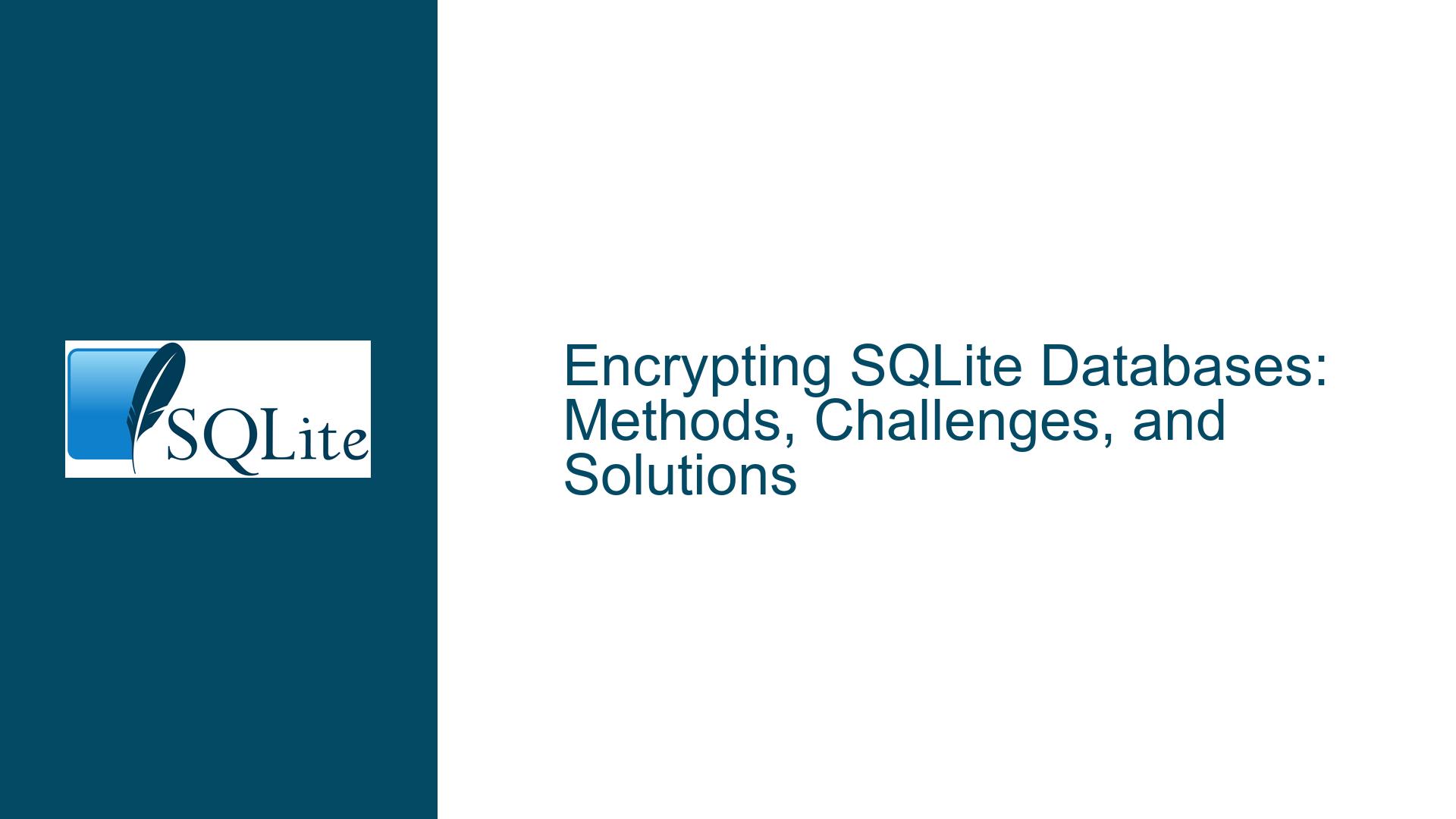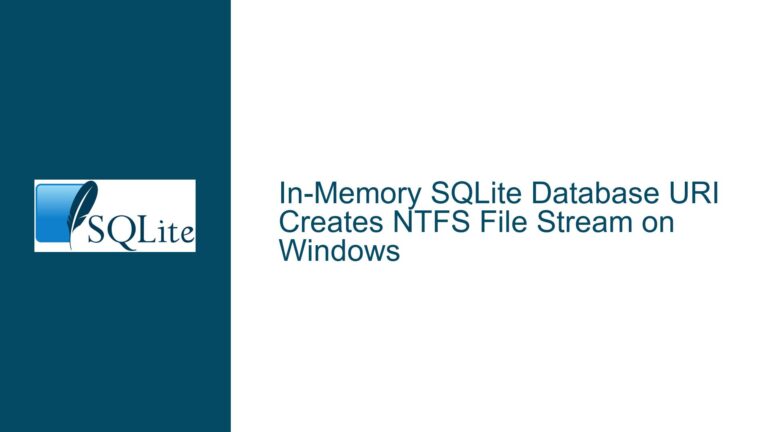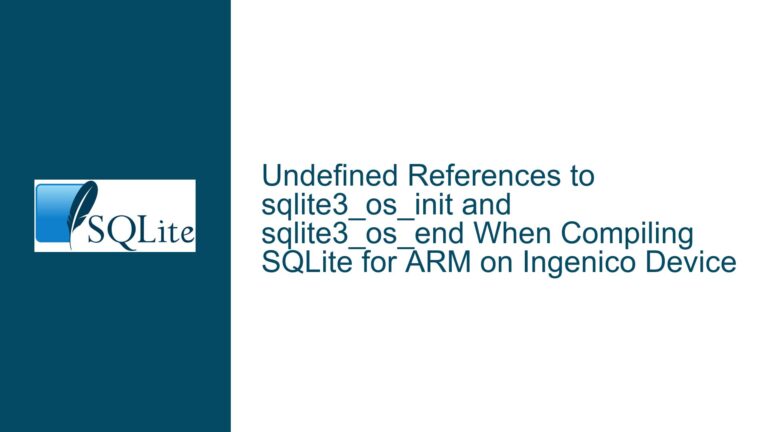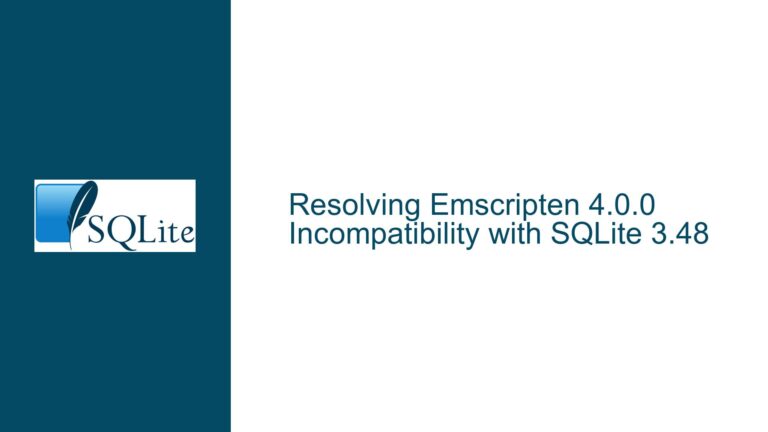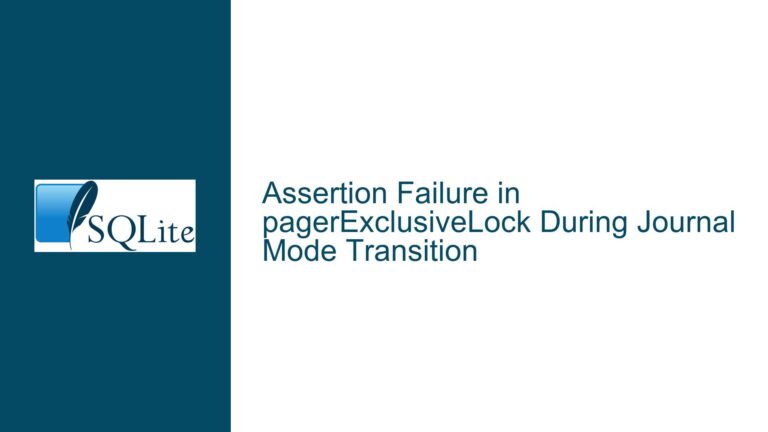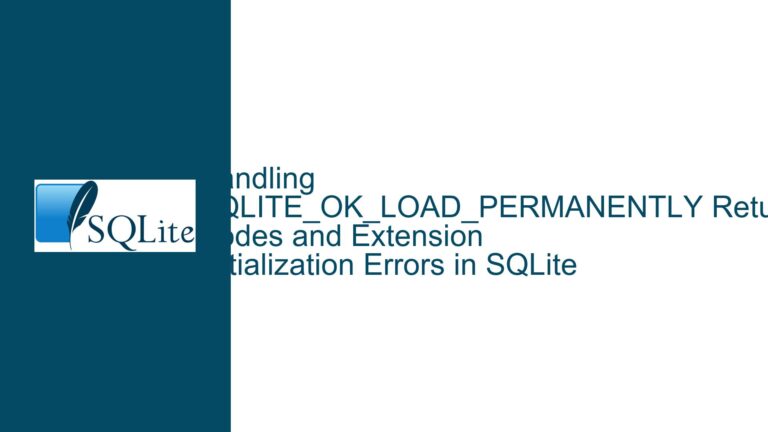Encrypting SQLite Databases: Methods, Challenges, and Solutions
Understanding the Need for SQLite Database Encryption
The need for encrypting SQLite databases often arises from the desire to protect sensitive data from unauthorized access. In the context of migrating from SQL Server Compact Edition to SQLite, the absence of built-in encryption in SQLite poses a significant challenge. Unlike SQL Server Compact Edition, which supports encryption out of the box, SQLite requires external extensions or custom implementations to achieve similar functionality. This discrepancy necessitates a thorough exploration of available encryption methods, their implications, and the best practices for implementing them.
Encryption is not merely a technical requirement but a strategic decision influenced by the nature of the data, the threat model, and the operational environment. For instance, a non-commercial desktop application handling critical data must ensure that the database file is protected against potential vulnerabilities, such as unauthorized access or data breaches. However, the effectiveness of encryption depends on how the encryption key is managed and stored. If the key is embedded within the application code, as suggested in the discussion, it becomes accessible to anyone with access to the executable, thereby undermining the security measures.
The discussion highlights several encryption options, each with its own set of features, licensing terms, and implementation complexities. These options range from commercial extensions like SQLite Encryption Extension (SEE) and SQLiteCrypt to open-source solutions like SQLCipher, sqleet, and SQLite3MC. Additionally, LumoSQL offers a unique approach with per-row encryption and checksums. Understanding these options requires a detailed analysis of their encryption algorithms, integration methods, and compatibility with different programming environments, such as VB.NET using System.Data.SQLite.
Exploring SQLite Encryption Extensions and Their Limitations
SQLite’s architecture is designed to be lightweight and extensible, which means that encryption is not natively supported but can be added through extensions. The SQLite Encryption Extension (SEE) is the official commercial offering from the SQLite developers, providing robust encryption capabilities. However, its commercial nature may not be suitable for non-commercial applications or those with budget constraints. SEE uses AES-256 encryption, which is a widely accepted standard for securing data. Despite its reliability, the cost and licensing terms may deter some developers from adopting it.
SQLiteCrypt is another commercial option that offers encryption features similar to SEE. It supports AES encryption and provides additional functionalities like on-the-fly encryption and decryption. However, like SEE, SQLiteCrypt’s commercial licensing may not align with the needs of non-commercial projects. The discussion also mentions SQLCipher, an open-source extension that has gained popularity due to its strong encryption standards and active community support. SQLCipher uses AES-256 encryption and is compatible with various programming languages, including C/C++, Python, and .NET. Its community edition is free, but commercial use may require a paid license.
Sqleet, an open-source project, offers an alternative approach with its use of the ChaCha20-Poly1305 encryption algorithm. This algorithm is known for its speed and security, making sqleet a viable option for developers seeking a lightweight and efficient encryption solution. SQLite3MC, another open-source extension, supports multiple encryption methods, including SQLCipher, sqleet, and wxSQLite3. Its flexibility and MIT license make it an attractive choice for developers looking to experiment with different encryption techniques without committing to a specific solution.
LumoSQL introduces a novel concept with its per-row encryption and checksums. This approach allows for granular control over data encryption, enabling developers to encrypt individual rows based on specific criteria. While this method offers enhanced security, it also introduces additional complexity in terms of implementation and performance overhead. The choice of encryption method ultimately depends on the specific requirements of the application, including the level of security needed, the performance impact, and the licensing constraints.
Implementing Encryption in SQLite: Best Practices and Troubleshooting
Implementing encryption in SQLite involves several steps, from selecting the appropriate extension to integrating it with the application. The first step is to evaluate the available options based on the application’s requirements. For instance, if the application is non-commercial and budget constraints are a concern, open-source solutions like SQLCipher or sqleet may be more suitable. On the other hand, if the application requires enterprise-grade security and support, commercial extensions like SEE or SQLiteCrypt may be the better choice.
Once the encryption method is selected, the next step is to integrate it with the application. For VB.NET applications using System.Data.SQLite, this typically involves modifying the connection string to include the encryption key and configuring the extension to handle encryption and decryption. It is crucial to ensure that the encryption key is managed securely, as embedding it in the application code can expose it to potential attackers. Instead, consider using secure key management practices, such as storing the key in a secure vault or deriving it from user input in a secure manner.
Testing is an essential part of the implementation process. Thoroughly test the encrypted database to ensure that data is correctly encrypted and decrypted, and that the application performs as expected. Pay attention to potential performance issues, as encryption can introduce latency, especially with large datasets. Optimize the database schema and queries to mitigate any performance impact.
In case of issues, such as the inability to set a password in the SQLiteConnection object, refer to the documentation of the chosen encryption extension for specific instructions. Some extensions may require additional configuration or custom code to handle encryption. If the issue persists, consider reaching out to the community or the extension’s support team for assistance.
In conclusion, encrypting SQLite databases is a multifaceted process that requires careful consideration of the available options, their implications, and the best practices for implementation. By understanding the need for encryption, exploring the various extensions, and following a structured approach to implementation, developers can effectively secure their SQLite databases and protect sensitive data from unauthorized access.
